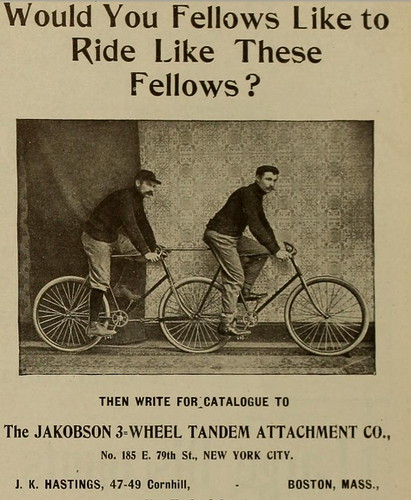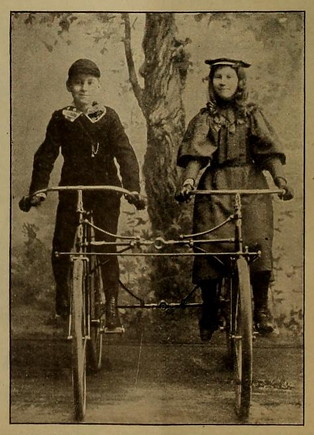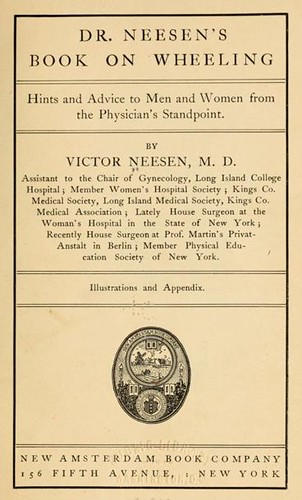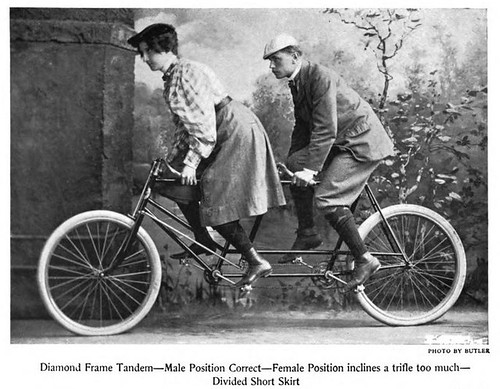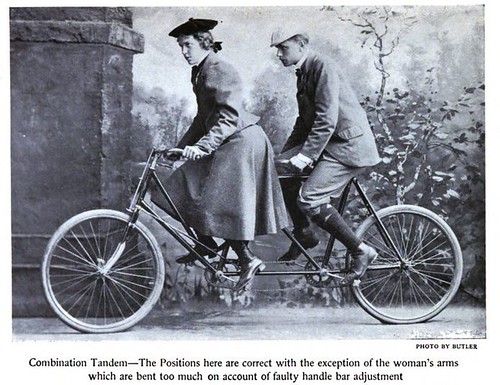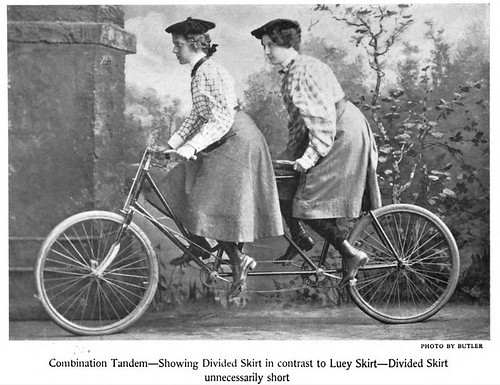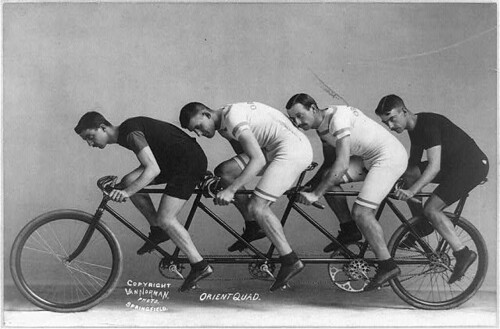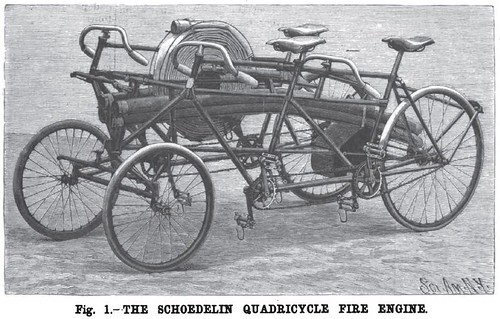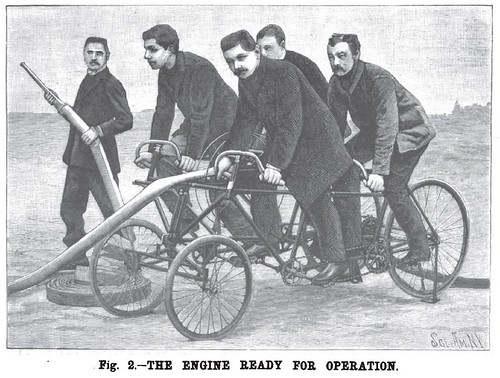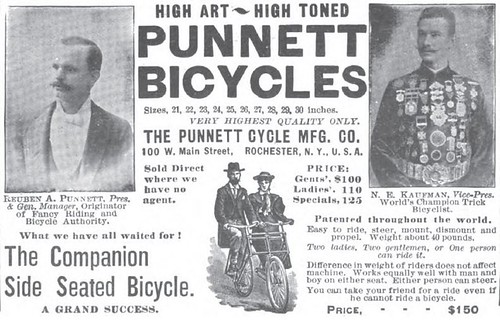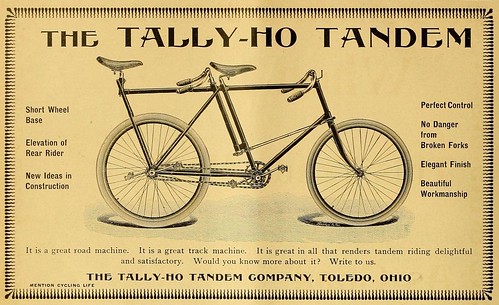Illustration from an 1892 book on cycling
The 1892 book Wheels and wheeling; an indispensable handbook for cyclists, with over two hundred illustrations is from a time when the "Ordinary" (or Penny Farthing, a bicycle with a large front wheel and a very small rear wheel that was driven directly by pedals attached to the front wheel) was still somewhat in competition with the "Safety" - a safety bicycle being much more like the bicycle we know today.
The page with the description includes the following:
Muller Tandem Bicycle. The tandem roadster of the Muller pattern has been given a thorough trial by many different riders in and about New York, and in spite of its 64-inch gear with only 51-inch cranks, it climbed in good time all the hills ridden by the ordinaries and safeties, and went ahead of every-thing encountered on the road. The frame (on which Mr. Muller holds his patent) can be applied to any size wheel, and made its appearance about three seasons ago, when, fitted with two 56 Expert wheels, Mr. V. H. Muller and his brother rode it, defeating all tandem teams of prominence. Last spring they gave the frame a thorough trial on a pair of 50-inch Springfield Roadster driving wheels,and on it made a tour of Europe, where its novel lines attracted much attention among the cycle manufacturers.Be that as it may, one doesn't see any of these around now. Apparently this is one of those ideas that just didn't catch on. One can imagine it had something to do with these being a paired fixed gear arrangement - no coasting. On the upside, it does appear that the rider in the rear has a brake. This would result in an unusual partnership, with the front rider responsible for steering and the rear rider for braking.

